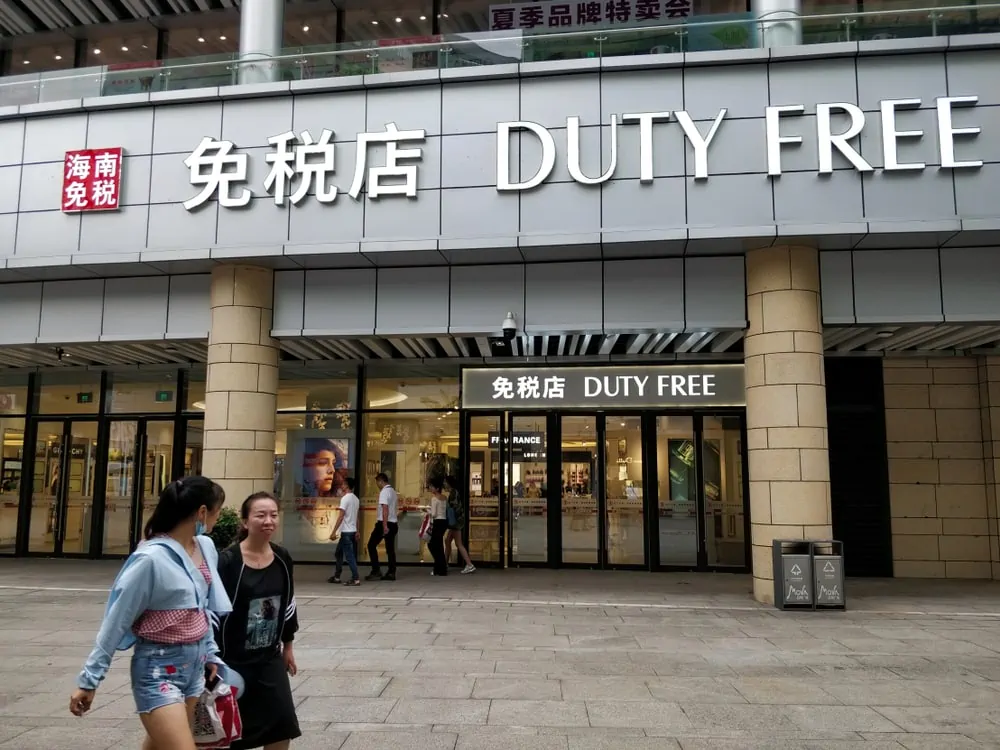The southern Chinese island of Hainan has become a consumer hotspot, driven by duty-free spending in huge new malls. But will economic slowdowns and continued Covid uncertainty dampen demand?
On Friday, 28 October 2022, the world’s largest duty-free shopping mall opened in Haikou, the capital of China’s Hainan Province. Owned by China Duty Free Group, the 3,000,000-square-foot cdf Haikou International Duty Free City is home to more than 800 international and Chinese luxury brands, including over 300,000 square feet allocated to beauty alone. This is not the first time that Hainan has claimed the title of the “world’s largest duty-free shopping mall” (there are already huge malls in Sanya on the south of the island and Bo’ao on the east coast) signifying the importance of the island for consumer brands in China.
Join CBBC for the first in a new China Chat series on 17 November to discuss Hainan’s role in China’s commercial layout and the blueprint for the country’s consumer market development going forward.
Click here to register
Over the past couple of years, the tropical island off the coast of southern China has recorded a rise in visitors and duty-free sales. “Visitors to Hainan have grown from 11 million in 2012 to 21.6 million in 2021, and duty-free sales have grown from £267 million in 2012 to £5.8 billion last year,” says James Hebbert, managing director of Hylink UK. The duty-free allowance for travellers departing Hainan (but not leaving China) is currently RMB 100,000 per person per year.
Since China closed its borders at the beginning of the Covid-19 pandemic, James notes that some of Hylink’s clients have seen the revenue that was previously gained in Europe from Chinese tourists replaced by domestic sales in China. Despite the occasional uncertainty caused by lockdowns and restrictions on domestic Chinese travel, money is being poured into Hainan’s duty-free malls and once the tropical resort is back in full swing, it is likely that middle-class Chinese residents will be the first to return.
“Consumers are entering a new era of duty-free shopping, and this is not going away even if the international travel restrictions [are not yet] easing,” says Rocky Chi, head of planning at leading Chinese marketing consultancy and full service agency, Emerging Communications. “The Chinese government will continue to push for duty-free shopping, and as for consumers, they are still quite spoiled for choice by such an easy way of shopping.”
“For UK brands, I think it’s time to keep options open and be open-minded and proactive in capturing opportunities, especially when the categories now are way beyond just traditional luxury goods and cosmetics,” adds Chi.
Many of the world’s leading companies have remained active in Hainan despite the setbacks caused by Covid-19. Luxury behemoths such as Richemont, L’Oreal and Estée Lauder have all continued to show their commitment by hosting large exhibitions and presenting new products. Hebbert argues that brands should use the popularity of duty-free shopping in Hainan and embrace digital tools to stay top of mind with Chinese consumers, even if regional lockdowns mean they can’t reach Hainan.
Hebbert adds: “Interactive digital events, gaming, social commerce and non-fungible tokens (NFTs) are evolving trends that all brands need to be aware of. To illustrate this point, the number of Chinese NFT platforms grew from 100 to 500 from February to June 2022; Morgan Stanley predicts that, by 2024, the metaverse industry will be worth £6.7 trillion in China; metaverse, gaming and NFTs could represent 10% of the luxury goods market by 2030.”



